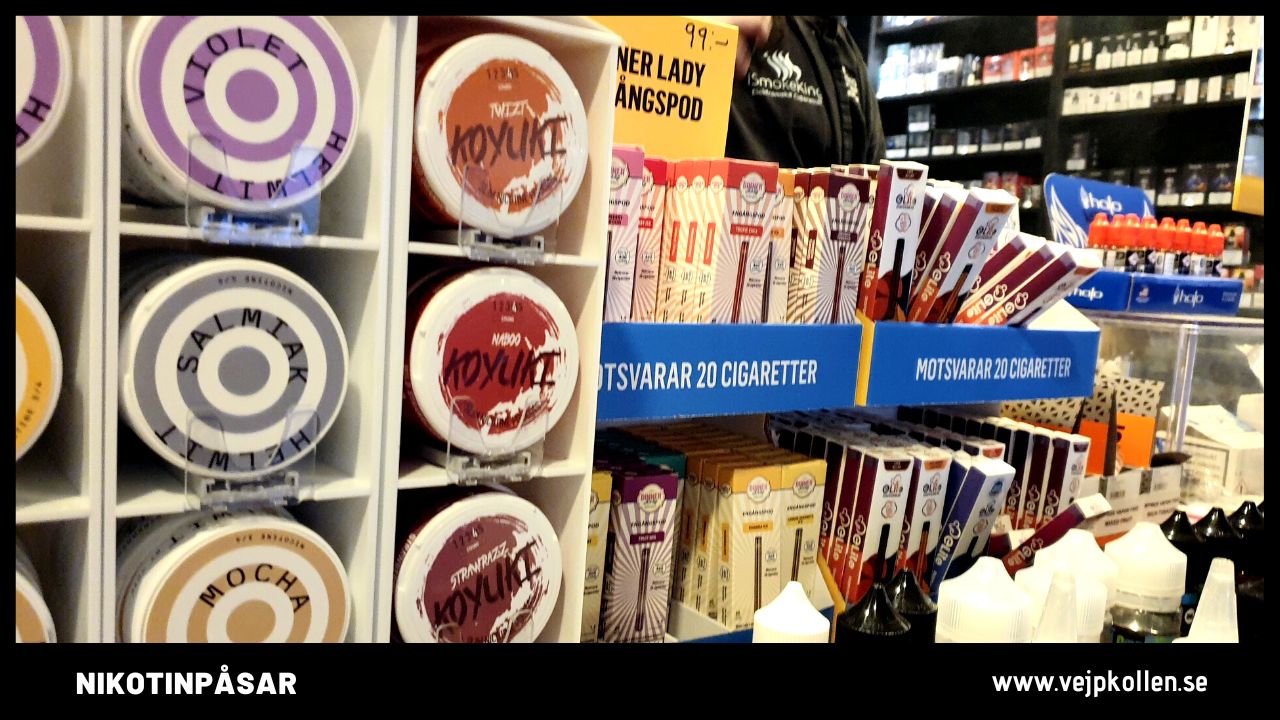Teenagers use e-cigarettes and snus.
Of course it is. Despite age limits, despite fear-mongering and despite the fact that many organisations are raking in large grants, taxpayer money, to run campaigns to "warn young people about the dangers of nicotine".
The methods didn't work to curb youth smoking in the 80s, why should it work for e-cigs and nicotine pouches now?
When I lit my first cigarette, I was 14 years old. I didn't come from a smoking home, but I knew how dangerous it was. My grandfather died of lung cancer, my grandmother of pulmonary emphysema (COPD). They smoked themselves to death, but it didn't matter to me at the time. I wanted to try it because I was curious.
And I liked it. Stupid? Maybe, but the benefits outweighed the risks at the time. Cigarettes opened the door to a world I hadn't had access to before.
If e-cigarettes had been around then, in 1989, I might have stuck with it instead. There is research to suggest this. Personality, childhood factors, risk-taking behaviour and a wide range of other psychological factors influence our decisions as young people. The choice to start smoking is, of course, no exception: the same "kind" of young people who vape and snuff today are the ones who started smoking in 1989. Why is this the case?
Anxiety, nicotine and agony
Smoking, or for that matter e-cigs, fills a void. It helps people create an identity, it brings people together, it tickles the nerves. And no matter what anyone says, in the real world, nicotine reduces stress and anxiety. It is a kind of self-medication for all the agonies of adolescence. For me, smoking ultimately meant more than that: I met my first real friends in the smoking rooms, during the holidays. the cooker hood at parties, on balconies where you could smoke. I got my first real job after a conversation in the smoking room of a local newspaper. This social aspect, the positive side of smoking, was in stark contrast to the negative side. Non Smoking Generations pompous lectures about how it was "cool" to be tobacco-free. The motto was that smoking "is stupid" and that I, as well as my grandmother, grandfather and basically all my friends were by definition stupid.
Who is listening?
It strikes me that this tactic of trying to scare young people into NOT doing something always follows the same pattern. And that creates problems. Because the only people who listen to the Non Smoking Generation are those who already fit in in their ideal image of what a young person should be: sporting, studying, listening, receptive - like a disciple in the Bible. And indeed they are out there - relatively unproblematic young people who don't skip school or hang out at parties. The ones who do their homework, succeed in school, struggle to get the best grade rather than a "measly" pass, and think the coolest thing on TikTok is wild dancing. They're not the kind of kids who don't give a shit, are tired of school, and would rather spend Wednesday night in a smoke- or steam-filled room listening to music with morally challenging lyrics. They're not the kind who sneak away from home to hang out at their friend's house and watch bad horror films they're not supposed to see. They're not the ones who arrive ten minutes late because "they didn't hear the bell" from the smoking window. These are young people who traditionally use nicotine more than others and this is where smokers are born. It is in this group that smoking has been part of the culture for a long time and they have no interest in listening to superstitions like the Non Smoking Generation.
Smoke kills
The problem, of course, is that smoking kills every second user over time. And no, it's not the nicotine that kills us, it's not all the flavourings (yes, ALL cigarettes are flavoured in some way) or all the chemicals that tobacco companies add to tobacco to make it more enjoyable. It is the actual burning of the tobacco, the smoke itself, that kills.
But expecting smokers, like me and others like me, to just turn their backs on all the positives of smoking was just naïve. This is why new harm-minimising products like e-cigarettes, snus, nicotine pouches are actually saving lives. If we allow it.
Probabilities versus facts
Parents, politicians and authorities need to understand what is driving this behaviour. They need to understand that e-cigarettes act as a substitute for cigarettes. The same feeling, the same social power, the same excitement. But they are not even close to as harmful as cigarettes, not even in a "worst case scenario".
Steam is steam - not smoke. Sure, steam is not health food, but the small amount of potentially harmful substances that can be measured in the vapour are unlikely to have any persistent effect on either blood vessels or lung cells. We don't have long-term epidemiological data, but researchers in the field are working on a probability calculation, comparing the harmfulness of cigarette smoke with a presumed harmfulness in the vapour from e-cigarettes. Although we do not, by nature, know the effects of 40 years of vaping, the we know what it means to smoke for 40 years: the damage is enormous. The body is unable to breathe in smoke, tar and carbon monoxide for decades. Tar, an umbrella term for substances that cause many different types of cancer, is deadly and carbon monoxide has a clear link to cardiovascular disease. None of these substances are formed in the vapour of an e-cigarette. Therefore, it is always good if a smoker can replace cigarettes with an e-cig, even if they continue to use nicotine for various reasons. Because nicotine is not deadly.
Harm reduction in the right place
Of course, young people will also be interested in e-cigarettes, whether it's for good flavours, cool devices, peer pressure or just because they like the buzz. This will happen whether we like it or not - age limits do not apply on the black market, that's where they find their stuff. That's why it's particularly interesting to see research that actually clearly shows that the group of young people. who 20 years ago started smoking frequently, nowadays are attracted by e-cigarettes instead. It is about people like me and thousands of others. We who are attracted by the benefits and don't care much about the risks. Those of us who like to hang out in the smoking area.
Harm minimisation also applies to young people
I am not, of course, going to sit here and encourage non-smoking young people to use electronic cigarettes. But I also realise that it doesn't really matter what I say. Teenagers will take risks. Ethan Nadelman, the well-known activist for a more liberal drug policy and founder of the Drug Policy Alliance, noted a few years ago that drugs, whether it's cannabis or nicotine, come in early in life.
"This is an important point. A majority of our young people make their drug debut before their sexual debut. That's why we need a harm minimisation perspective, a safety-first approach for them as well." says Ethan Nadelman.
The importance of being pragmatic
As an adult, parent or just politically involved, I have a responsibility. It is not about stopping young people from testing limits. It is about managing, and if possible limiting, the risks that young people inevitably expose themselves to. I therefore want to see safety belts in the cars, if we choose that analogy. I want to see sex education in school and that young people learn how to use condoms. I want them to use helmet, even on a tuned-up moped. But I also want the authorities and official representatives to inform that e-cigarettes (or for that matter snus and nicotine pouches) are not risk-free, but still a "safe" option. safer alternatives for those young people who insist on smoking at recess. This is pragmatic risk minimisation, harm reduction in practice.
Time to choose a path
How we as a society deal with the technology known as e-cigarettes can have major implications for public health. If e-cigarettes continue to attract young people, we are likely to see the effects of this in 40 years' time in the form of greatly reduced harm from nicotine use. Maybe more addiction, but not fatal use.
On the other hand, if the Non Smoking Generation and their funders (often those who sells nicotine medicines) are allowed to continue in the same old way as before and, in the worst case scenario, gain greater influence on policy, the opposite is likely to happen: e-cigarettes (and later snus and nicotine pouches) will be discouraged as an alternative on the market and young people will return to using analogue cigarettes instead, just like before. We already know the damage this would cause.
So it's about choosing a path. We can help young smokers to choose. They will most likely continue to do stupid things. The only question is HOW stupid? THAT is what we choose.




